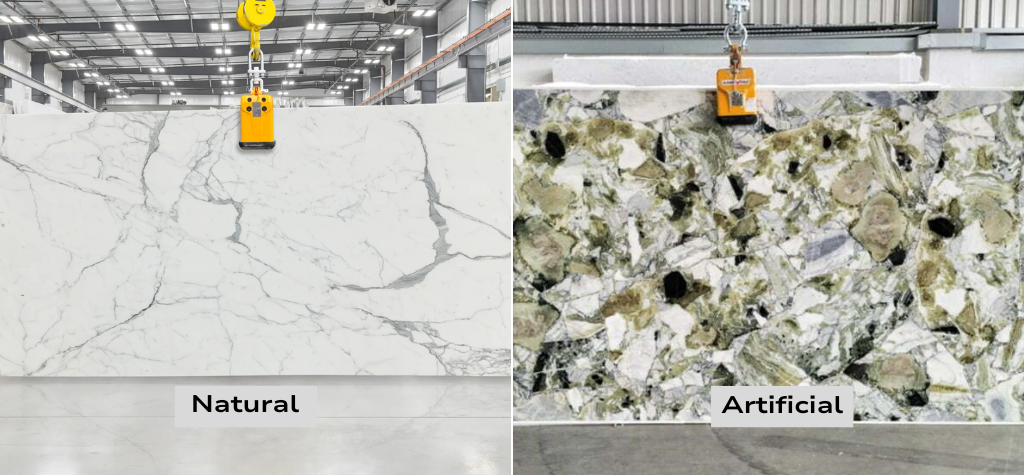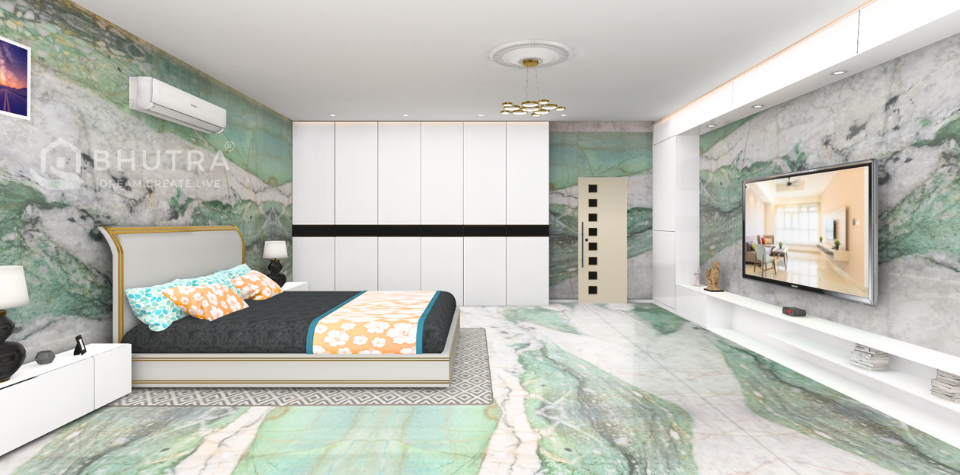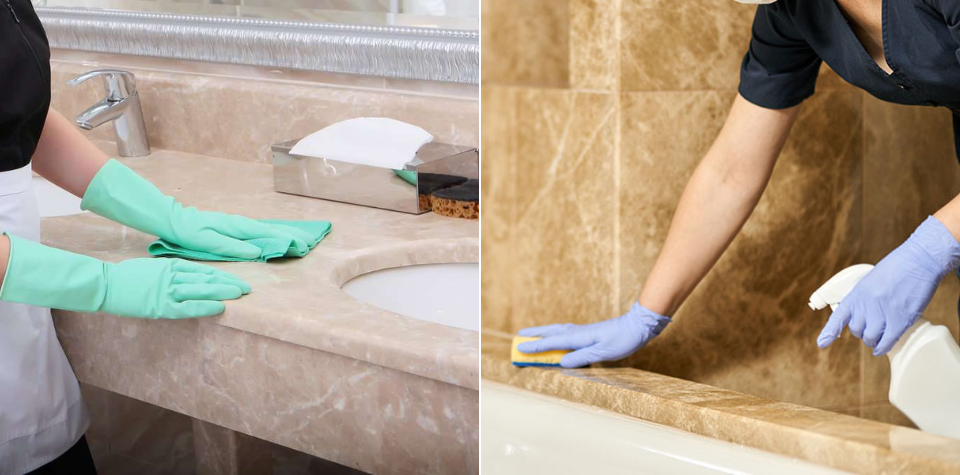Which is Better for Health Natural or Artificial Marble

Best Italian Marble for Stairs in India
May 7, 2024
Top 10 Best Italian Marble for Front Elevation
June 5, 2024Marble, with its timeless elegance and durability, has been a favored material in architecture and interior design for centuries. From grand columns in ancient temples to sleek countertops in modern kitchens, marble’s aesthetic appeal is undeniable.
However, when it comes to choosing between natural and artificial marble, health considerations often come into play. While both options offer distinct advantages, their impact on health is a crucial factor that homeowners and designers must weigh carefully.
In this post, we will delve into the health implications of natural and artificial marble, helping you make an informed decision for your living space.
Whether you’re concerned about indoor air quality, potential allergens, or the long-term effects of building materials on your well-being, this guide will provide the insights you need to choose the healthiest option for your home.
Health implications of natural vs. artificial marble
When considering the health implications of natural versus artificial marble, it’s essential to understand the differences between these materials.
While both offer aesthetic appeal, their composition and production methods can affect indoor air quality and long-term health.
Natural Marble:
- Composition: Natural marble is quarried directly from the earth and is composed of calcium carbonate.
- Pros: It’s a natural material with unique veining and patterns, adding timeless elegance to any space.
- Cons: Can contain impurities such as trace minerals and metals, which may release into the air over time.
Artificial Marble:
- Composition: Also known as engineered or cultured marble, it’s made from a combination of crushed marble stone and synthetic resins.
- Pros: Uniform appearance, customizable colors, and patterns. It’s also less porous and more resistant to stains than natural marble.
- Cons: May contain volatile organic compounds (VOCs) from the resin used in production, potentially impacting indoor air quality.
| 📱ENQUIRY! Send Your Inquiry Directly on WhatsApp |
Indoor Air Quality: Natural vs. Artificial Marble
Indoor air quality is a crucial factor to consider when choosing between natural and artificial marble for your home. Here’s how each type can affect the air you breathe indoors:
- Natural Marble: While natural marble itself doesn’t emit VOCs, it can harbor dust, mold, and other allergens if not properly sealed and maintained.
- Artificial Marble: The resins used in artificial marble production may emit VOCs, contributing to indoor air pollution. Opting for low-VOC or VOC-free products can mitigate this risk.
Allergens and Toxins in Marble
Understanding potential allergens and toxins in marble is essential for maintaining a healthy living environment:
- Natural Marble: Can be prone to harboring allergens such as dust and mold if not adequately sealed and cleaned.
- Artificial Marble: The synthetic resins used in production may contain allergenic compounds and VOCs, which can exacerbate respiratory issues for sensitive individuals.
Long-Term Health Effects
Consider the long-term health effects of using natural versus artificial marble in your home:
- Natural Marble: While generally considered safe, prolonged exposure to airborne particles from natural marble dust may pose respiratory risks for individuals with pre-existing conditions.
- Artificial Marble: VOC emissions from synthetic resins may contribute to indoor air pollution and have been linked to adverse health effects over time.
Safety for Families with Allergies
For families with allergies or respiratory conditions, choosing the right type of marble is crucial:
- Natural Marble: Proper sealing and maintenance can help minimize allergen buildup, but it may still pose risks for those with severe allergies or asthma.
- Artificial Marble: Opting for low-VOC or VOC-free artificial marble products can reduce the risk of triggering allergic reactions or respiratory issues.
| 📱ENQUIRY! Send Your Inquiry Directly on WhatsApp |
Sustainability and Environmental Health Impacts
Consider the environmental implications of both natural and artificial marble:
- Natural Marble: Quarrying and processing natural marble can have significant environmental impacts, including habitat destruction and carbon emissions.
- Artificial Marble: While it may contain recycled materials, the production process of artificial marble involves energy-intensive manufacturing and the use of synthetic resins, which can contribute to pollution and resource depletion.
Maintenance and Health Considerations
Proper maintenance is key to ensuring a healthy living environment with marble surfaces:
- Natural Marble: Regular sealing and cleaning can help prevent the buildup of allergens and maintain indoor air quality.
- Artificial Marble: Choose low-VOC or VOC-free products and follow manufacturer recommendations for cleaning and maintenance to minimize health risks.
Benefits of Using Natural vs. Artificial Marble
When it comes to choosing between natural and artificial marble for your home, each option offers its own set of benefits.
Benefits of Natural Marble:
- Timeless Elegance: Natural marble boasts unique veining and patterns, adding a touch of sophistication and luxury to any space.
- Durability: With proper care, natural marble can last for generations, making it a long-term investment in your home.
- Heat Resistance: Natural marble is naturally heat-resistant, making it ideal for use in kitchens and bathrooms.
- Increase in Property Value: Installing natural marble countertops or flooring can increase the resale value of your home, thanks to its perceived luxury and durability.
Benefits of Artificial Marble:
- Customization: Engineered marble offers a wide range of customizable colors, patterns, and finishes to suit any design aesthetic.
- Consistency: Unlike natural marble, which can vary in appearance, artificial marble provides uniformity in color and veining, ensuring a cohesive look.
- Stain Resistance: The non-porous surface of artificial marble makes it more resistant to stains and etching compared to natural marble.
- Cost-Effectiveness: Engineered marble is often more affordable than natural marble, making it a budget-friendly option for homeowners seeking the look of marble without the high price tag.
- Environmental Considerations: Bhutra Marble & Granites offer eco-friendly options, incorporating recycled materials and low-VOC resins, reducing environmental impact.
By considering these benefits alongside the health implications, homeowners can make informed decisions when selecting marble for their living spaces.
| 📱ENQUIRY! Send Your Inquiry Directly on WhatsApp |
Conclusion
Bhutra Marble & Granites is a leading provider of marble and granite solutions, offering a range of natural and artificial marble that combines timeless elegance, durability, and affordability.
We have the expertise to fulfill your unique design vision, offering classic natural marble or customizable engineered marble options. Our commitment to quality ensures every slab meets the highest standards of craftsmanship, ensuring lasting beauty and satisfaction.
Bhutra Marble & Granites understands that your home is a reflection of your personal style and taste, providing tailored solutions and personalized attention to detail.
Our premium marble and granite products transform your space into a sanctuary of luxury and sophistication. Contact us to explore our extensive selection and discover the perfect marble and granite solutions for your needs, making your dream home within reach.
| 📱ENQUIRY! Send Your Inquiry Directly on WhatsApp |





